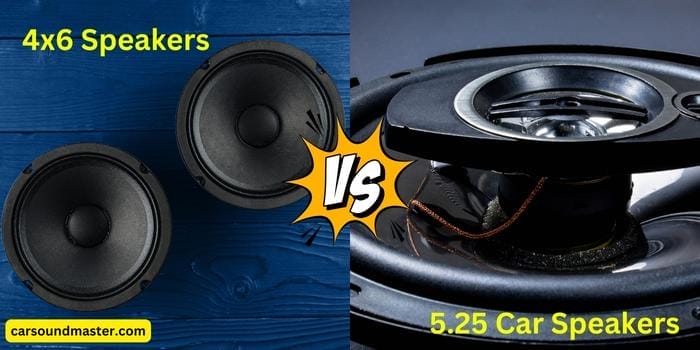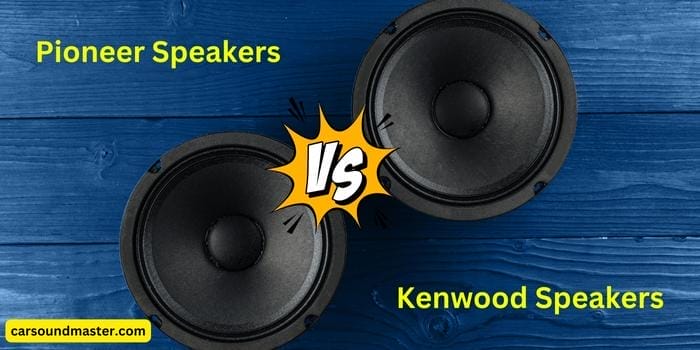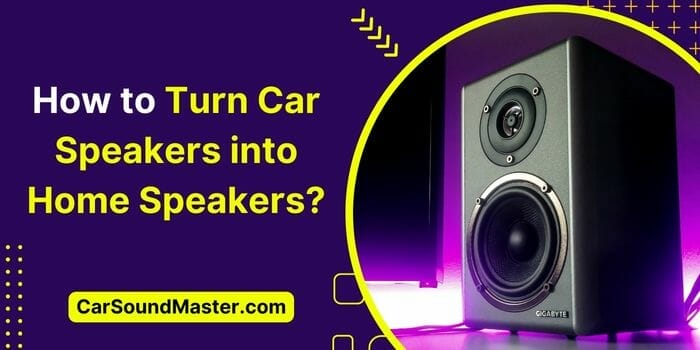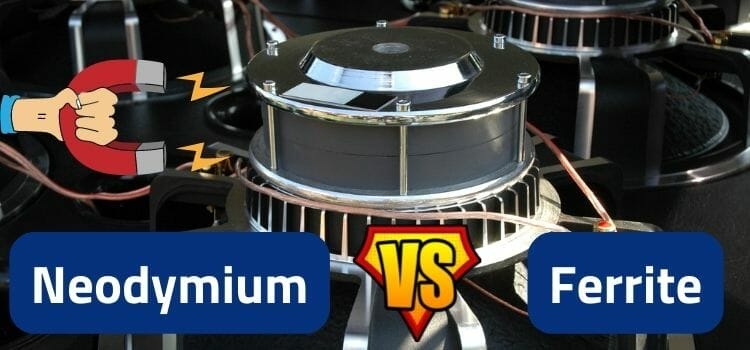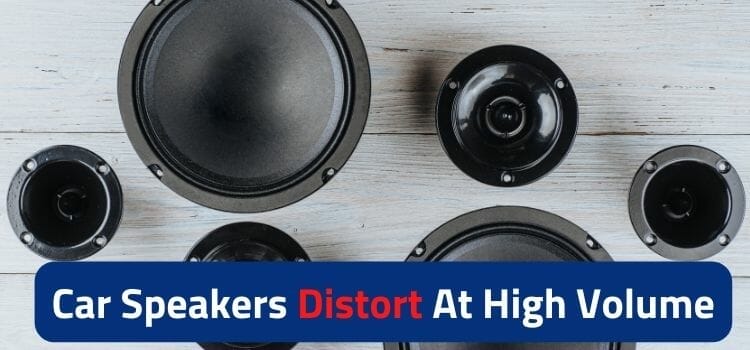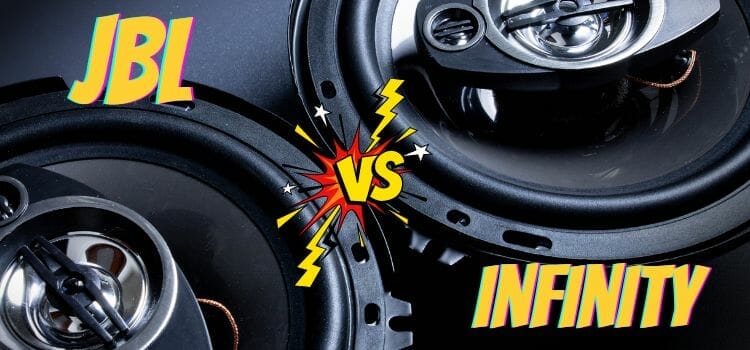4×6 Vs 5.25 Speakers – The Best Upgrade to Your Dash and Deck Stocks?
Though car speakers come in so many different sizes starting from 3 inches to up to 8”, the sizes that are more often the OEMs’ standards in your car’s dash, seats, or parcel shelf are 4”, 4×6”, or 5.25”.
That’s why when you plan on overhauling your car’s stereo, these very aftermarket sizes make for the easiest drop-in kind of revamp.
In addition, if you’re quite tight on budget too, again, these sizes make you not think too much about the revamp costs as they are gettable for pretty nothing.
Well, let me suppose you’re stuck and dealing with both scenarios i.e. you want to redo your car’s stocks, but you’re skimpy on bucks as well. So let me help you with which one you should ideally get.
4×6 Vs 5.25 Speakers
Though the selection of speakers in your car depends very much on the manufacturer and model, in general, the 4 into 6” and 5.25 speakers” are the most common speaker types to go into your vehicle’s dashboard, back doors (maybe sometime), or rear deck (the parcel shelf).
I’ve already discussed the 4×6 car speakers in detail here (4×6 plate speakers vs oval), let’s now find out how they do in comparison to the 5.25s – their principal competitors.
Merits and Demerits of the 4×6 Car Speakers
Right Off the Manufacturing Belt – Composition and Types
The 4×6 is one of the pretty smaller car speaker sizes and, as already said, one of the top contenders alongside the 5.25s to tune up your dash, doors, rear pillars, and deck. They boast two different sorts of builds with both edging past each other in one way or the other.
The 4×6 plate speakers flaunting round speakers and designed inspired by component sets are quite more popular than the 4×6 ovals.
Sound Quality
The plate version of 4x6s allows for mounting customizations as well as sounds relatively more synchronized and impactful. That owes solely to their builds as the circular speakers are always good at evenly dispersing the sound waves due to their perfect symmetry.
Plus, with round speakers, the cone is evenly held from each millimeter so there are no distortions whatsoever as well. The no cone-mounted tweeters and separate crossovers also help with sound clarity as there are no frequency conflicts between the drivers.
Whereas, the oval speakers are usually only great with their high volumes due to their slightly elongated cones that allow for more air to move in that very side-by-side manner. But the asymmetry of their design translates into shaky and unstable sounds especially when you go up the with the volume knob.
Power Requirements
The 4×6 plate speakers, because they imitate components, may have a tad bit higher RMS and peak requirements than the ovals. Nonetheless, the average power rating of 4×6 car speakers strolls somewhere around 25 watts to 40 watts.
Need for Separate Subs, Enclosure Effect, Individual Bass Performance
If bolstered by a separate subwoofer (installed in tandem), the 4×6 speakers give you excellent control across the vast frequency spectrum and make for an exceptionally optimal experience.
But if you can’t afford a separate sub and still want more bass, then you should ideally go for 4×6 ovals (their bigger surface area not only produces higher volume but deeper bass as well).
Do remember, if you want the 4×6 ovals to peak their performance (esp. at bass), you’ll have to enclose them in relatively bigger enclosures compared to their circular counterparts.
Pricing and Options to Choose from
Because 4x6s are one of the small yet popular speaker sizes that are oftentimes even the stock standards in most vehicles, their aftermarket replacements are too easy to get. They don’t require you to break a bank and are also easily available everywhere.
Also, these speakers come in, as previously discussed, two different designs with the performance factor varying with price points and from brand to brand.
Key Details About the 5.25” Car Speakers
Much Better at Mids and Highs
The 5.25-inch car speakers generally come in round shapes off the manufacturing girdle. And we know that the circular speakers are relatively superior in the quality of sound. So you feel not just great mid-bass but an altogether better sound from a 5.25 speaker as compared to any typical 4 by 6.
Buying Options
These speakers are available in both coaxial and component designs as well as in the form of individual mid-bass drivers. The individual mid-range would then need to be set up in tandem with a separate woofer and tweeter to enhance your overall experience.
Although the component set is always the better option of the three, if you prefer going with a coaxial 5.25, make sure you find one with swivel mounts for the tweeters. That will help you with aiming those high-frequency notes straight up towards the listener(s).
Pricing and Availability
The 5.25” speakers are also one of the most popular stock standards (esp. going behind the seats or in back doors) in many cars, so they are also one of the easiest drop-in types of upgrades to your OEM stocks.
For that reason, with the 5.25” speakers too, the availability and pricing are never an issue. They are also widespread in the market, and like 4x6s, these too are gettable for almost nothing.
Power Ratings
Given the slightly bigger sizes of 5.25” car speakers, they require a bit more RMS and peak push as compared to standard 4×6 speakers. Though these ratings vary with assemblies, brands, and other manufacturing tweaks, an average power handling capacity of 5.25” speakers can be anywhere between 25 watts to up to 60 watts.
Bass Performance
Because 5.25” is also one of the smallest car speaker sizes not to mention their round shapes (which even worsen the matter), these speakers never make for impactful bass performance. Unless they are not accompanied by a separate sub, expect 5.25s to even fail to typical 4×6 ovals when it comes to bass-heavy sounds.
Ending Note
Car speakers that are quite smaller in size and come stock standards as well are more often considered just fillers and not front-stage speakers. So when it comes to 4×6 vs 5.25 speakers, you should expect redoing these stocks as just fine-tuning your car’s soundstage gaps, and that’s it.
Nevertheless, due to their size, inexpensiveness, lower power needs, and great value-to-price ratio, speakers of these types are highly popular as excellent support systems for the vehicle’s advanced main speakers.
Both 4×6 and 5.25” speakers boast exceptional versatility and are available in both full-range and component designs. With the 4×6 car speakers, you’d more often need a separate sub for better overall sound imaging or bigger enclosures (for oval 4x6s) to get impactful bass.
Whereas, with the 5.25” variants, again you need to combine separate woofers and tweeters with them for a definite sound experience.
And as far as the compatibility factor is concerned, you can easily get 4×6 or 5.25” speaker adapters from the market and easily upgrade your 5.25” or 4×6” stocks, respectively, in any vehicle.

